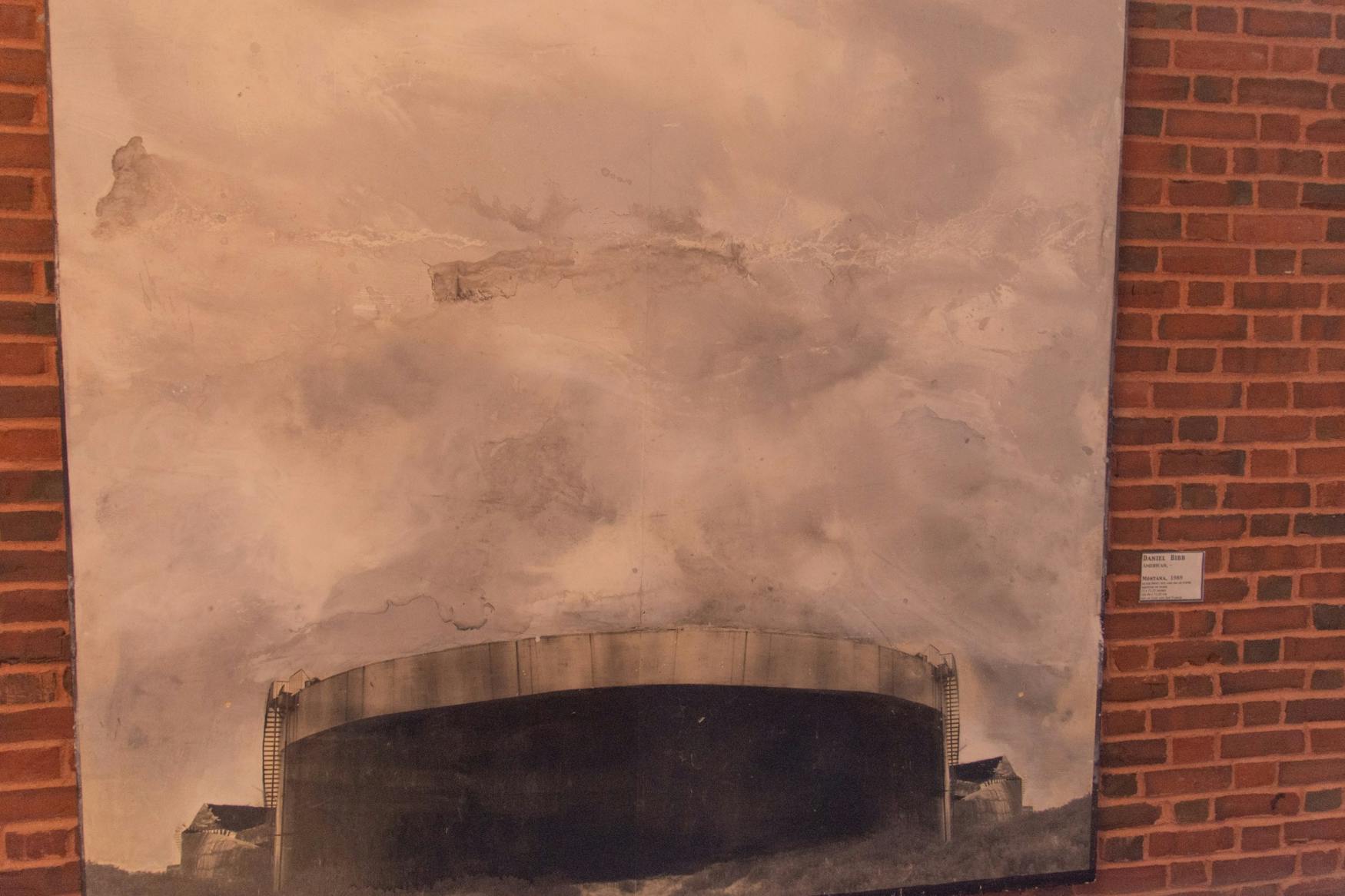Spotlight on the Dreitzer Gallery 01/28/2020
The first season of “True Detective” is my all-time favorite television show. Besides the spine-chilling storyline, amazing performances by Matthew McConaughey and Woody Harrelson, the cinematography develops its own characteristics. As the main characterS drive from one case scene to another, the audience sees the decay of the human construct eaten away by the wilderness — an unsettling hybrid that fits perfectly with the mood of the show. All of those are captured with lots of wide shots, which is a somewhat unconventional way to create a spine-chilling atmosphere. When I saw “Montana, 1989,” by Daniel Bibb, in the Slosberg Music Center’s Dreitzer Gallery, I was reminded of a similar sense of uneasiness.
First looking at the piece, it seems like a very simple black and white photo, constructed by a cloudy sky and an aged circular architecture. At the same time, there is also something unnatural about the combination of the two parts. With a closer look, the “cloudy” sky is either illustrated or entirely done by water paint. Once that realization is made, the sky is no longer cloudy, but covered by the gloom of dark constructs. At the same time, the building itself is almost entirely asymmetrical. The darkness from aging on the sides of the building do not match each other, and there is no way to know if this is formed naturally or added by the artist.
The mixture of photography and painting creates an interesting relationship between reality and imagination. The architecture in the piece is by no means a small construct, but it looks so small relative to the space above it. For most people, the sky is one of the most familiar subjects of nature, yet it is a totally unfamiliar space for most people. To me, the darkness over the sky is the unknown part of the world that we unconsciously forget, even though it is looming over our heads everyday.



Please note All comments are eligible for publication in The Justice.